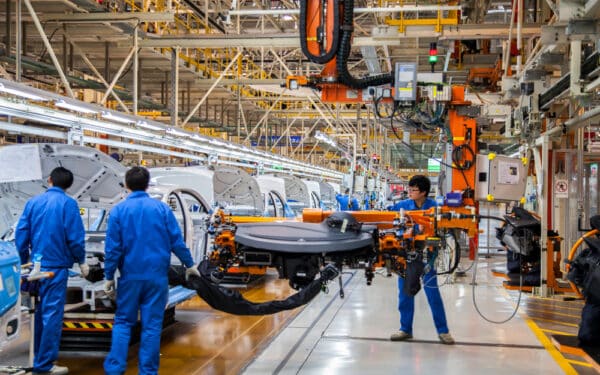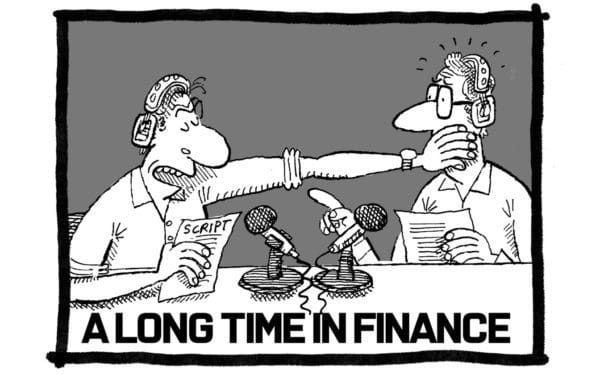Across the West inflation is hitting multi-decade highs. US inflation rose from just 0.1% 18 months ago to 7.5% in January, a 40-year high. In the UK and euro area inflation rates are spiralling at over 5.0% and have further to go. The Bank of England expects Britain’s inflation rate will reach 7.25% in April.
These sorts of rates of inflation pose an increasing threat to the recovery, arguably more so than the pandemic (at least in its current, milder incarnation).
The real problem is not a temporary surge in inflation, the sort that was seen in 2011 on the back of rising commodity prices. The current bout of inflation is worse than expected, but most economists continue to think it is driven by temporary factors, particularly disruption caused by the pandemic, and that price pressures will ease later this year. If they’re right central banks will want to tighten policy, but probably not enough to derail the recovery.
Yet with inflation in the US and Europe at, or heading to, the 6.0%–8.0% mark, it’s right to contemplate a more alarming outcome, in which an upward wage-price spiral keeps inflation high. In that world central banks would need to tighten policy much more aggressively. Rather than a light “touch on the tiller”, they might need to shock the economy with higher interest rates and a rapid unwinding of quantitative easing.
Similar policies crushed runaway inflation in the early 1980s and early 1990s – but at the cost of putting the economy into recession.
It was, perhaps, such thoughts that motivated comments by the Bank of England governor, Andrew Bailey, last week. Bailey acknowledged it would be “painful” for workers to accept that prices would rise faster than wages, but some “moderation of wage rises” was necessary to prevent inflation becoming entrenched.
As a central banker tasked with keeping inflation at 2.0%, Bailey’s job is to worry about such risks. Inflation is hitting a jobs market that by most measures is running hot.
The UK unemployment rate has dropped to 4.1%, not far off the 43-year low seen on the eve of the pandemic. Job vacancies and the rate at which people switch jobs are at record highs; redundancies are at record lows. The inflow of foreign workers to the UK has gone into reverse since the pandemic, with the overseas-born workforce declining by over 250,000 in the last two years.

Most forecasters expect wage growth to accelerate markedly this year, yet few expect them to keep pace with inflation. A Bank of England survey of 400 firms shows average private sector pay settlements rising from 3.6% in 2021 to close to 5.0% in 2022, a rate that is below most forecasts for inflation this year. In its latest Monetary Policy Report, released earlier this month, the Bank forecasts a pickup in nominal pay growth in 2022 that would leave real, or after-inflation, pay declining until spring of next year. On average private sector economists see inflation coming in at 5.4% this year, ahead of estimated growth in average earnings of 4.2%.
Given the labour market is so tight, why are wages unlikely to keep up with inflation?
The labour market has changed a lot since the days of spiralling wages and inflation in the 1970s. Unions have lost much of their power to protect real earnings from inflationary shocks. The economies of the west are more open to trade, and to global competitive pressures than in the 1970s, constraining the ability of businesses to pass on inflationary wage rises in higher prices.
Shorter term factors are also at work. In the last two years illness, shutdowns and widely fluctuated sectoral demand have stoked wage pressures. The easing of restrictions is easing such pressures, a development captured by the sharp decline in the Bank of England’s estimate of “sectoral job mismatches” (essentially a measure of getting the right person for a particular job).
A stronger jobs market will also tempt some of the half million or so people who became economically inactive in the last two years to return to work. The number of young people who stayed on in education rose sharply but is declining. (Agreed, far greater uncertainties relate to the 200,000 additional people who joined the ranks of the ‘long-term sick’ during the pandemic. The exact cause is unclear, but long COVID is the obvious suspect.)
There is also a degree of extra capacity within the existing workforce. Average hours worked per person are below pre-pandemic levels and getting on for a million temporary workers say they would like to work full time.
Within today’s difficult environment lies an opportunity. Businesses will need to work harder to recruit harder-to-reach groups – younger, older and disabled people, those with home responsibilities and some ethnic minorities. Changes wrought by the pandemic could help. It has increased workplace flexibility, particularly home working, in a way which has already improved work opportunities for those with family and home responsibilities. The number of people classified as economically inactive for such reasons, a group comprised mainly of women, dropped sharply during the pandemic. The forced experiment of homeworking has brought many challenges, but it also seems to have enabled more women to combine work with other commitments.
Rising inflation is creating major problems for policymakers, households and businesses. While wage levels are rising, they seem unlikely to match inflation this year. But if the newfound labour market flexibility sticks, we could also see a growing number of people “lost” to the jobs market getting back into work.
A personal view from Ian Stewart, Deloitte’s Chief Economist in the UK.




